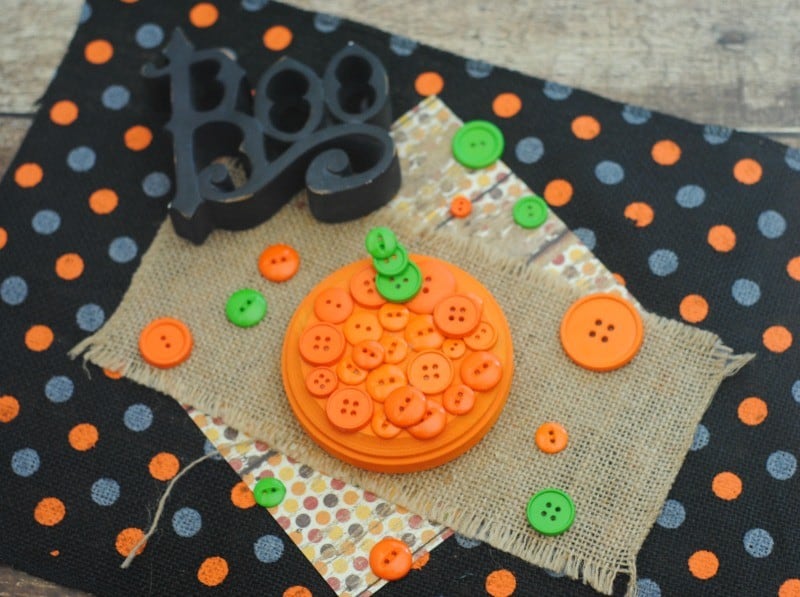An oral historical past of the landmark restaurant, which just became 15 years historic.
Tom Colicchio's manhattan restaurant Craft opened 15 years ago this summer, simply a few months before the twin Towers fell.
Its manufacturer of stripped-back ingredient-centric pleasant dining seemed radical on the time. but because the world unraveled that fall, its homey consolation cooking allowed for a variety of collective healing via family unit-style nourishment. It was the appropriate restaurant on the right time.
over the years its impact has spread large and far. A who's who of proficient cooks has passed through Craft's kitchen. The now-ubiquitous aspect dishes and shared middle classes originated there, as did the pared-down exceptional-dining aesthetic at the moment found in eating rooms throughout the country—including the restaurant's signature bare wooden tables, clever placemats and dangling Edison bulbs.
And it is no small feat for a brand new York restaurant to show 15, when most corporations within the five boroughs are fortunate to hold on for even a yr or two.
I talked to Colicchio and key members of his opening crew concerning the restaurant's beginnings and its essential milestone.
Tom Colicchio, chef and television personality, proprietor of eight restaurants across the country
"I knew i needed to do a second restaurant and knew it wasn't going to take place with Danny [Meyer]. i used to be still an owner and the chef at Gramercy Tavern when the space around the nook grew to be attainable. on the time, so plenty turned into being observed buying from farms, about sustainable fish. It was all about sourcing and simplifying. I noted, let's definitely simplify this. So if we're going to roast a bit of fish, roast it with fresh herbs, drizzle it with olive oil—is that satisfactory? will we get away with that? no longer that we had been pulling anything over on americans, but if we're going to that severe will people find it irresistible? The reply become sure. To do roasted scallops and have a person say, 'Wow I by no means knew scallops tasted like this.' You're eating stuff that's sauced and garnished you overlook what food tastes like. That's what we were concentrated on—what's the essence of this particular ingredient, the most fulfilling approach to get flavor out of it?"
On the restaurant's design:
"The identify took place as a result of I basically believed this fashion of cooking is extra in regards to the craftsmanship and fewer about the artistry. The design of the restaurant adopted from that. i wished to see how things have been put together. i wanted to peer the filaments in the lightbulbs, to see the weld within the wine cupboard. We desired to limit the amount of ingredients we used in the design, the textures—there's leather-based, steel, wood—and to do as few painted surfaces as viable. We had these pleasing cherry timber tables and i desired americans to look them, not to cowl them. these Chilewich placemats, we were the primary ones to make use of them. Katie Grieco [former general manager] saw them within the Museum of contemporary paintings shop."
Marco Canora, opening head chef at Craft, chef/proprietor fire and Terroir in big apple, broth evangelist
On sourcing the elements:
"in the early tiers, it wasn't about dishes, it changed into about items—about discovering poulards from 4 Story Hill Farms in Vermont. It changed into new territory on the time, letting the procurement of the merchandise be the component in preference to the artistry of the chef. The maitake mushrooms, the bird-of-the- woods [mushrooms]. at the time, they weren't far and wide. D'Artagnan all started importing them from Japan and we obtained hang of them and were all tremendous excited. That basic dish of roasted fowl- of-the-woods mushroom turned into form of a large deal back then. It changed into all about approach and execution, no longer about seem to be how inventive I can also be. We stepped far from that. We were getting colossal Belon oysters from Maine, fascinating reside sea scallops, dover sole. It changed into all about procurement."
On the opt for-your-own-event menu:
"We loved this concept of giving the guest the reigns to customize their meal. The thought become you couldn't mess it up—all of it worked. You could have scallops with a side of zucchini or a facet of Swiss chard, it in fact didn't rely. but early on, after we opened, we also had condiments and sauces as a class on the menu. What an sick-conceived suggestion that become. On excellent of the big picture decisions we gave visitors the choice of adding a Bordelaise or a béarnaise sauce or a simple jus, after which there have been the condiments—we had preserved lemon, salsa verde, minced roasted peppers. It was a nightmare. The tickets that came into the kitchen were really lengthy, impossible to expedite. We gave that up after a week, I feel."
thank you!
You are actually subscribed to the every day Digest and Cheat Sheet. we can now not share your email with anybody for any purpose
Jonathan Benno, opening sous chef at Craft, head chef at Lincoln Ristorante in long island
On the restaurant's opening group:
"all of us labored collectively at Gramercy Tavern whereas Tom turned into there, so it became a gorgeous tight community that knew a way to prepare dinner smartly and the way to work collectively. That's some of the hardest issues if you happen to open a cafe and begin to construct a crew—there's no rhythm. It takes time to build that. That became the primary issue we had going for us. We were all pals and respected Marco and Tom and had labored collectively in a pretty good kitchen."
On carrying on the Gramercy Tavern lifestyle:
"the entire issues we're bored with listening to about today—farm-to-table and nose-to-tail—they were all occurring at Gramercy Tavern twenty years in the past and certainly persevered to take place at Craft. Tom changed into searching at the greenmarket, sourcing seafood from native fishermen, breaking down whole animals. Working with fantastic components, respecting components, serving them effectively: These are the things Tom pointed out once we opened Craft. As a prepare dinner it become in fact pleasing to be capable of supply an excellent piece of red meat and focus on cooking it in fact, really neatly and never should agonize about timing it with eleven different things that go on the plate."
Damon wise, former head chef at Craft (after Marco Canora), chef/owner of Scarecrow, Feathertop Kitchen and intelligent-Buck Smoked Meats, all in Charleston, South Carolina
On touchdown a job at Craft:
"i used to be simply returned from a 12 months and a half in Paris and thought i wished to work in a French kitchen in manhattan, for Daniel [Boulud] or somebody like that. i was standing on the corner in Union square and Tom walked via. He was like, 'What are you doing right here? I'm getting ready to open this restaurant. I've received a job for you.' Tom become like that. I didn't definitely have any cash—I'd spent all of it in France—so I took the job at Craft. I wasn't planning on being there for a long time. i finished up spending 12 years working with Tom."
On absorbing the classes of Craft:
"Tom is a extremely mature prepare dinner. When he turned into on the line, the manner he cooked, things were sort of spare but so technical and worried on the identical time. looking again on the fashioned Craft menus, you can see it. And now that I'm getting old I recognize that fashion extra, making the materials sing, don't overdo it. When i used to be more youthful, I always desired to push the envelope. Now I wish to focus on the visitor, hold it primary, however make it enjoyable. That's full circle what I've taken from Craft."
Courtesy Of ©artistic Photographers, inc.
Akhtar Nawab, member of the outlet crew at Craft, former head chef at Craftbar, chef/owner Choza Taqueria and Indie sparkling, consulting chef at table in Washington, D.C.
On understanding the institution's theory:
"Having hung out in Italy, I understood what it meant to have an outstanding piece of fish neatly organized with nothing on it. but it surely didn't truly translate to what individuals had been doing right here, or how consumers wanted to devour, i believed. i used to be wrong, undoubtedly. loads of other chefs drank the Kool-help and copied it fairly a lot verbatim. BLT jumped on the conception relatively early on. And we started seeing these Chilewich placemats all over the place that no one had ever used earlier than."
"We received this huge order of copperware from Paris to serve our meals in, which was type of different. And every thing became really basic. Polenta changed into just polenta with thyme leaves and cracked pepper and olive oil. Our job became to find the most reliable polenta we could and cook dinner it effectively and serve it right. There was little or no margin for error. Seasoning of meals grew to be critical. Skate wing, for instance, has a herbal salinity, it doesn't require as plenty salt as halibut. You have to know that. You couldn't work there if you weren't a great cook dinner."














 instructions:
instructions:
 Step2 Jumbo paintings Easel overview
Step2 Jumbo paintings Easel overview 

 finest art storage solution: There are 4 detachable cups to hang markers, paintbru shes, crayons and more. youngsters can effortlessly eradicate the cups to dangle in their arms as they create (BONUS – they additionally make tremendous items on your Step2 Water Tables & Step2 Waterwall Toy). Cubbies galore! protected with the brand new Jumbo artwork Easel are 6 cubby storage containers, to hold your whole newborn's artwork components. It's so great to organize the entire youngsters' "stuff" in a single enviornment! My favourite storage area has to be the paper and coloring ebook storage below. we are able to now quite simply discover drawing paper, sticker books and all of the youngsters' coloring pages for brief paintings actions.
finest art storage solution: There are 4 detachable cups to hang markers, paintbru shes, crayons and more. youngsters can effortlessly eradicate the cups to dangle in their arms as they create (BONUS – they additionally make tremendous items on your Step2 Water Tables & Step2 Waterwall Toy). Cubbies galore! protected with the brand new Jumbo artwork Easel are 6 cubby storage containers, to hold your whole newborn's artwork components. It's so great to organize the entire youngsters' "stuff" in a single enviornment! My favourite storage area has to be the paper and coloring ebook storage below. we are able to now quite simply discover drawing paper, sticker books and all of the youngsters' coloring pages for brief paintings actions.
 the brand new Step2 Jumbo paintings Easel is obtainable on-line at Step2.com or Amazon.com with the MSRP of $99.99. be sure to follow Step2 by means of fb, Twitter, Pinterest, Instagram, Google+ and YouTube for the newest toy products, contests, product trying out alternatives and greater!
the brand new Step2 Jumbo paintings Easel is obtainable on-line at Step2.com or Amazon.com with the MSRP of $99.99. be sure to follow Step2 by means of fb, Twitter, Pinterest, Instagram, Google+ and YouTube for the newest toy products, contests, product trying out alternatives and greater!


 what is your favorite characteristic of the new Step2 Jumbo paintings Easel?
what is your favorite characteristic of the new Step2 Jumbo paintings Easel?